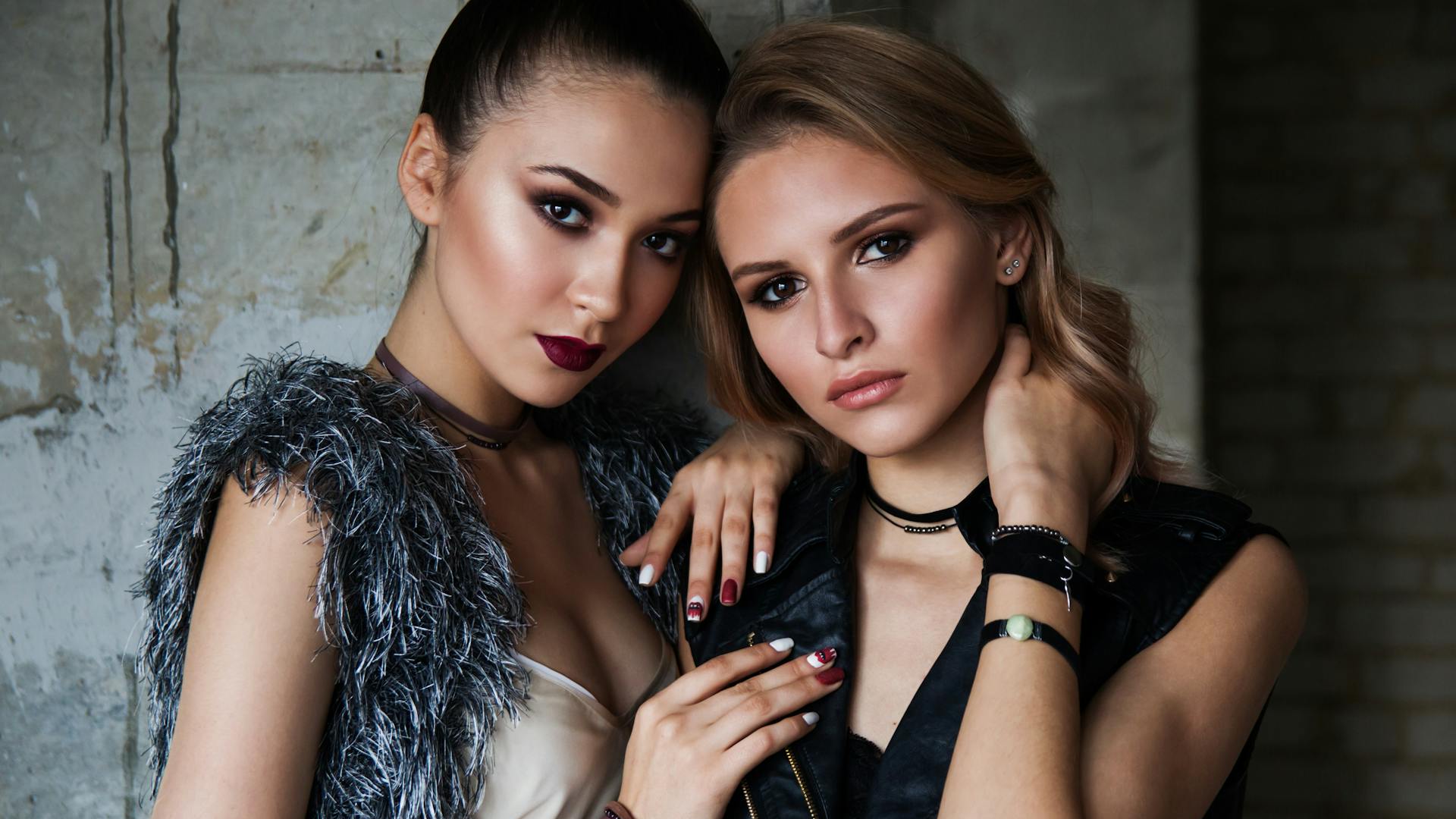Science
Ten Minutes is Enough: How AI is Changing People’s Minds
07 January 2026

Women’s insecurities about their appearance are not just a cash cow for cosmetic surgeons – they also serve to stifle the emancipation that feminism made possible. These days, there is no need to relegate women to the kitchen to keep them from leadership roles. Instilling a constant fear of being unattractive is enough to divert their focus from scientific and professional ambitions to an endless quest for beauty.
In 1990, Naomi Wolf published The Beauty Myth, one of the most influential feminist works of its time. It arrived at a pivotal moment. The second wave of feminism has brought many positive changes for American women since Betty Friedan’s The Feminine Mystique in the 1960s. Women were graduating from universities, conducting research, and becoming professors. They were climbing corporate ladders and starting their businesses. Female writers and journalists were flourishing. Yet the 1980s also saw three terms of Ronald Reagan’s presidency, associated with social conservatism.
How did right-wing governance affect women? On the surface, not dramatically. They were not pushed out of the labor market, though a “glass ceiling” emerged, mysteriously preventing advancement beyond a certain level. Women were competent, effective, hardworking and well-educated, yet men still typically became bosses, managers and leaders. Simultaneously, images of “ideal” women proliferated. The goal for American women was not meant to be a career or power. Nor was it family. Rather, being the perfect beauty became the aspiration, constantly reinforced by television, cinema, advertising and the press. Unlike the “domesticated” beauty of the 1950s – round and maternal – new ideals emerged of much thinner, taller women who had undergone plastic surgery. The 1980s saw aesthetic medicine – previously reserved for actresses, models and millionaires’ wives – become mainstream in America.
Wolf saw this as a backlash against feminist gains. No one consciously decided to sow insecurities about appearance in women, but as a “political solution” this manipulation proved highly effective. The new ideal was extremely difficult to achieve. It demanded large breasts but a flat stomach; narrow hips but a tiny waist; the smallest possible nose but large lips and eyes. No wrinkles or any signs of aging. No fat, except for ample breasts. Since nature (in terms of genes and the passage of time) rarely bestows all these traits at once, women began resorting to various, often harmful, practices to avoid weight gain, aging and ugliness – treated as terrifying afflictions unique to women.

The ground was fertile for aesthetic medicine to flourish. Since it was “medicine”, the procedures offered had to be associated with health concerns. Thus, small breasts, large noses, wrinkles, and fat around the hips or belly became symptoms of pathological conditions to be combated at all costs. Naomi Wolf also discusses the quasi-religious perception of physical attractiveness, where ugliness is the secular equivalent of sin. In this interpretation, fasting and painful procedures serve as a form of redemption. But what is the source of this sin, never committed by the arbiters of female beauty – men of all sizes and ages? Wolf points to natural femininity itself. She cites the example of popular breast augmentation surgeries in the 1980s, which could result in loss of nipple sensitivity – part of the very pleasure being sought…
The female body is shaped as it is due to reproductive mechanisms. Women have more fatty tissue around the hips and abdomen than men because of the possibility of pregnancy. Breasts and nipples are larger in women than in men because only women nurse infants. This may seem obvious, but not in the context of the beauty myth. Pregnancy, childbirth, and postpartum are classified as unattractive, or ugly. A pregnant woman is “fat” and cannot exercise. Within the beauty myth, advice for women who have just brought a new human being into the world – arguably the most beautiful thing imaginable – consists of remaining in isolation until fasting and exercise restore their pre-pregnancy form. The ideal would be to look as if one had never been pregnant, achieved through “tummy tucks”.
How does this translate to women’s lives? The constant pressure of appearance robs all pleasure, including sexual pleasure, which once again – as in the Victorian era – is based on what men do with the female body to achieve pleasure through it. Wolf argues that when a woman is desired solely for her appearance, only her image participates in sex, while her “self” focuses on how best to present herself to her partner.
How is it possible, the author asks, that women with less-than-perfect bodies and faces enjoy the most fulfilling erotic lives? What sets them apart? Her answer, very much in the spirit of today’s body positivity movement, is that the key lies in self-acceptance, affection, and love for their femininity.
We recommend: Back to Basics: Why We Need Second-Wave Feminism Today
Referencing the content of The Beauty Myth, one always realizes that it remains entirely relevant, in some respects more so than when it was written. While wide hips are now desirable rather than narrow ones, the essence of this myth – placing extremely difficult demands on the female body – is thriving as never before. Today’s fashion for prominent buttocks does not mean acceptance of once-rejected wide hips – it is about liposuction from the abdomen to transplant fat lower. There may be more women over 40 or 50 on television today, but they must meet a double condition: use Botox and hyaluronic acid to avoid looking their age. When a woman speaks on any issue, an endless stream of comments scrutinizes her appearance in minute detail. The self-proclaimed “experts” of the internet have no doubt that this aspect trumps the substantive content of her message.
Social media contributes significantly to the beauty myth’s even stronger impact today. It is hard not to develop insecurities when viewing hundreds of “perfect” female bodies and faces, enhanced by both aesthetic medicine and numerous filters. Paradoxically, while the beauty myth values young women most highly, it is precisely young women who have the most complexes and are much more sensitive than older women to jibes about their appearance; as they have not yet learned assertiveness towards the beauty myth, trust in their bodies, and how to draw from the experiences and knowledge of other women.

The question of whether the beauty myth also affects men was initially dismissed. Sexuality was supposed to be the domain of men, who determined a woman’s value – never the reverse. Men were not subject to the imperative of youth, maintaining a slim figure, an athletic body, beautiful hair, specific facial proportions, and so on. Every man considered himself an expert on women. This is well illustrated by a meme showing a pot-bellied man with a proboscis monkey face judging a beauty pageant, saying of one contestant:
Her nose is too big.
The meme is contemporary but describes men of the generation fathering today’s twenty-somethings. While young men today also criticize women, their complaints clearly stem from insecurities about their appearance. They know they are being evaluated – and it pains them. They rail against dating apps where fewer women can choose among them, partly based on looks. This fuels theories that women favor a small percentage of men who mistreat them, thus taking revenge for the unappreciated masses.
There is no empirical evidence for this. A man who treats women as people need not be basketball-tall or square-jawed to form successful relationships. And if he can do that, he hardly needs dating apps. In this sense, men do not face comparable harm to young women who compulsively diet or save for plastic surgery, believing the world abhors their natural appearance. This attitude has been classified as a mental disorder called “body dysmorphia” – a panic fear of one’s ugliness that must be corrected at all costs, including health and life.
We recommend: Pop Psychology: We Start Spouting Nonsense and Demand Respect for This Nonsense
However, while women are aided by body positivity movements, men are left alone with their complexes. Their most common – and moreover, positive – reaction is sports, mainly weightlifting. Yet danger lurks in excess. Steroids and high-protein diets for muscle gain can quickly destroy the digestive tract. Furthermore, men obsessed with muscularity develop a disorder akin to anorexia and body dysmorphia. Called “bigorexia,” it involves constant dissatisfaction with one’s insufficiently “large” physique.
It is hard not to feel sympathy for young men who believe destroying their physical and mental health is worthwhile to gain women’s interest. One wishes they would realize that to build good relationships with women while grooming matters, the key is to converse with them as equals. However, this sympathy does not extend to various “losers”, “incels,” and “red-pillers” who feel victimized by women and feminism, and thus believe they have the right to spread extremely dehumanizing views of women who should be “punished” by humiliation or physical mutilation.
Translation: Klaudia Tarasiewicz
Polish version: Mit piękna wczoraj i dziś. Obserwacje Naomi Wolf nie tracą na aktualności

Science
06 January 2026


Zmień tryb na ciemny